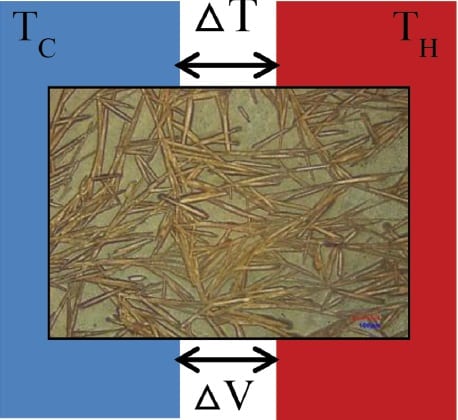 Thermoelectric modules based on polymers offer multiple advantages, including being printable, flexible, operating at moderate temperatures, and avoiding rare or toxic elements. They are also able to redistribute heat – a constant problem with current electronics.
Thermoelectric modules based on polymers offer multiple advantages, including being printable, flexible, operating at moderate temperatures, and avoiding rare or toxic elements. They are also able to redistribute heat – a constant problem with current electronics.
But thermoelectric modules require semiconductor pairs to transport holes and electrons separately. Finding a suitable polymer for electron transport, or one which can be doped in order to make it suitable, is a challenge.
Researchers from the USA have now fabricated a purely n-type polymer semiconductor composite for electron transport. They combine a pyromellitic diimide polymer which has pentafluorophenyl end caps with an in situ-crystallized inorganic component, SnCl2, chosen for its well-known reduction ability. This solid additive increases the electron-carrying capacity and the voltage that can be obtained from the temperature difference. The mechanism is a combination of electron donation to the polymer and surface electroni c effects.
They compare their polymer with current commercial polymer systems, and find that their voltage per unit temperature breaks the current record for n-type polymers.
Advanced Science is a new journal from the team behind Advanced Materials, Advanced Functional Materials, and Small. The journal is fully Open Access and is free to read now at www.advancedscience.com.

















